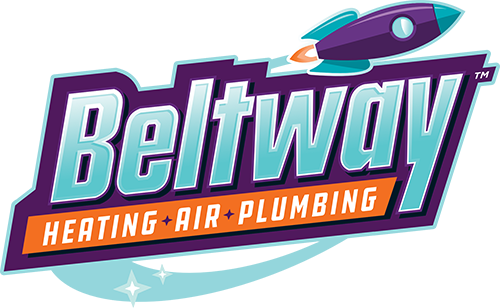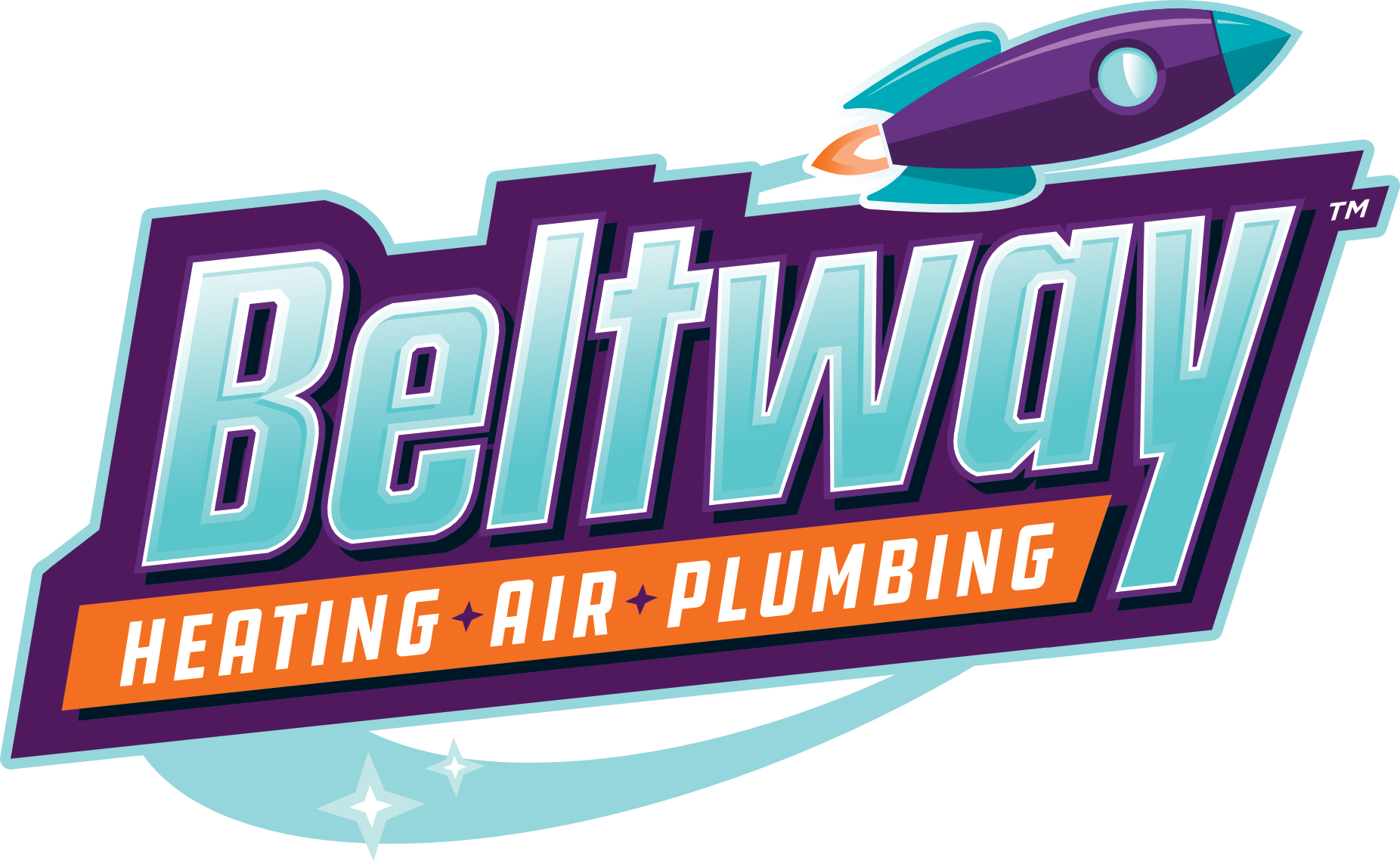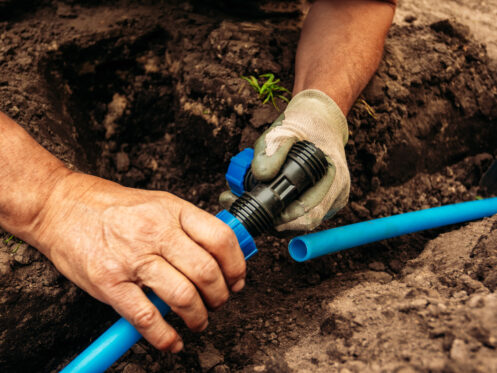Many homeowners take pride in keeping their yard lush and green all summer long or in growing beautiful flowers or an abundant vegetable garden. While these things are great, the problem is that it requires a huge amount of water to keep everything healthy and vibrant. For many households, it’s estimated that somewhere between 30% and 50% of their total water usage during the warmer months comes from watering their lawns and gardens. The unfortunate fact is that much of this water is actually wasted as a result of things like evaporation from watering at the wrong times, constantly overwatering or forgetting to shut the sprinkler system off before or after it rains. This type of water waste is exactly what smart irrigation systems are designed to prevent.
Traditional vs. Smart Irrigation Systems
All automatic irrigation and sprinkler systems use a controller that turns the system on and off. The controller also signals the different valves in the system to open and close, allowing water to flow to each of the zones. With traditional irrigation systems, the controller is basically just a timer. That means you program it for the specific days and times you want the system to water and set the length of the watering cycle for each zone. Most controllers also have a relay delay feature that you can use to temporarily stop the next cycle or cycles.
While traditional irrigation system controllers are useful, they do have a few major drawbacks related to water waste. For one thing, it’s extremely difficult to tell exactly how much water a lawn really needs. The last thing you want is for your grass to start dying and turning brown. That’s why many people end up massively overwatering their lawn by either setting each watering cycle too long or having their irrigation system run more days of the week than is actually necessary.
Forgetting to use the rain delay function further contributes to water waste and overwatering, as does watering when it’s overly humid outside. Watering your lawn when it’s overly hot and dry outside is also a massive waste, since most of the water just ends up evaporating before it can soak down into the soil.
Smart irrigation systems eliminate all of these issues, helping to conserve large amounts of water and greatly reduce waste. Instead of just manually programming your watering cycles like you do with a traditional system, smart irrigation systems use advanced controllers and sensors to accurately determine exactly when the lawn or garden needs to be watered and exactly how much water it needs. The sensors allow the controller to program the watering cycles and turn the water on and off itself without you needing to do a single thing.
Climate-Based Smart Irrigation Controllers
There are two primary types of smart irrigation controllers, each of which uses different types of data to determine when the irrigation system needs to run and how much water everything should get at a time. The most common is a climate-based controller, which uses one of three methods to calculate the appropriate water schedules based on the local climate and weather. Specifically, they use this data to determine the current estimated rate of evapotranspiration, which is how quickly water evaporates from the soil and how quickly it gets taken up by the roots of plants.
Signal-based controllers use a wireless connection to continually monitor the current local weather and predicted forecasts. This allows them to continually adjust the water cycles based on things like temperature, humidity level, rainfall amounts, predicted rainstorms, etc.
Historic controllers simply use pre-programmed past weather patterns and water usage in the local area to program the watering cycles. They then continually adjust the cycles based on temperature.
On-site climate controllers just use sensors to measure the current weather at your home, including the temperature, humidity level and any recent rainfall. This can make them a bit more accurate. However, the controller doesn’t know the forecast, meaning your irrigation system could still end up running just before a major rainstorm.
Soil-Sensor Controllers
The second type is a soil-sensor controller, which uses underground moisture sensors that continuously measure how much water there is in the lawn’s root zone. This type of sensor is extremely accurate at determining exactly how much water the grass needs, ensuring it never gets overwatered or underwatered.
The one downside of soil-sensor controllers is that you still have to program the times and days you want your irrigation system to run. Some soil-sensor controllers use a suspended cycle method, which means the controller will prevent the next scheduled cycle from running anytime the ground is already sufficiently moist. With this type of controller, you also still have to program the duration of each watering cycle.
Water-on-demand controllers are more advanced. This type of controller will only run the scheduled cycle if the soil is below a certain moisture threshold. It also automatically determines the duration of each cycle and will shut the water off once the soil reaches a certain level of saturation.
The best type of smart irrigation system for reducing water usage has both a climate-based controller and soil-moisture sensors. This is the most accurate since it has more data to work with. The climate-based controller ensures the irrigation system will only run when the weather conditions are right. The soil-moisture sensors also help the controller to more accurately determine the current watering needs of the lawn. The result is that your water usage is reduced, and at the same time, you never have to worry about your lawn getting too little water and potentially starting to yellow.
How Much Can You Save With a Smart Irrigation System?
Smart irrigation systems have been repeatedly proven to reduce waste and lower water usage. Most studies have shown that smart irrigation systems lead to between a 20% and 50% reduction in water usage compared to traditional irrigation system controllers. That said, exactly how much you can save with a smart irrigation system depends on a variety of factors, including where you live, the size of your lawn, the type of grass you have and the type of soil.
Another important factor is whether your irrigation system was designed properly and is working correctly. Issues like leaky sprinkler heads or multiple heads that overlap the same area will result in wasted water, no matter whether you have a traditional or a smart irrigation system.
Dependable Plumbing Solutions
When you need a Maryland plumbing service you can trust, Beltway Air Conditioning, Heating & Plumbing is the company to turn to. We serve customers in Hanover, Halethorpe, Severn, Columbia, Pasadena and the surrounding areas. Whether it’s upgrading your outdoor plumbing fixtures, repairing any existing problems, or installing a new irrigation system, we’ll always make sure to do the job right. We take pride in performing quality work and offering the best prices available. To get the reliable outdoor plumbing installation services you need without having to wait, contact us today.





